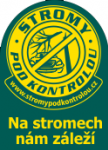V. From Zálabí to the sugarbeet railway
The natural centre of this town district is Jiráskovo square. On the edge of the square there is an originally gothic parish church of St. Vít, the church was mentioned already in 14th century. In 17th century, the church underwent a baroque reconstruction, and a four-sided bell tower was built in 1777. The adjacent cemetery (the burial place of members of important Kolín families) was damaged by the construction of a new bridge, during the building process the cemetery was literally divided into two parts. From Jirásklovo square follow Tovární street where you can find another place of interest in Zálabí – the power plant from the 1930s. The original parts of the power plant are a good example of functionalist architecture. The power plant is situated on the place of the former Horský sugar factory and it was built according to the project of Jaroslav Frágner.
The busiest street on this river bank is currently Ovčárecká street which is loaded by cargo transport heading to TPCA car company. This road will lead us almost to the town cemetery which was founded on the property between Veltrubská and Ovčárecká street in 1882. Until then Kolín inhabitants used to bury their dead bodies in the proximity of local churches. The cemetery also changed its appearance. The original entrance gate with the chapel and the undertaker´s flat were destroyed.
Next, Ovčárecká street continues with the flyover of the railway and along the former big industrial companies Tatra and Koramo. The road will take the visitors to a town suburb Sendražice. Since 2007 you can find here something really unique there – Kolín Sugarbeet railway. This narrow-gauge 3.3 km railway should be prolonged to Býchory in future. Today it serves as a touristic attraction for excited visitors. However, the original railway was used especially for transporting sugarbeet from fields and farms to Kolín sugar company. The original railway was built in 1890s from the initiative of Adolf Richter. The railway was also used for transporting cinders and sand. The last season for the original railway was the year 1961, a few years later the rails were pulled out. Thanks to the effort of several enthusiasts the tradition was restored and the trains again pass through the Labe lowland.
























 Máte zájem dostávat nejnovější zprávy přímo do vaší e-mailové schránky?
Máte zájem dostávat nejnovější zprávy přímo do vaší e-mailové schránky?